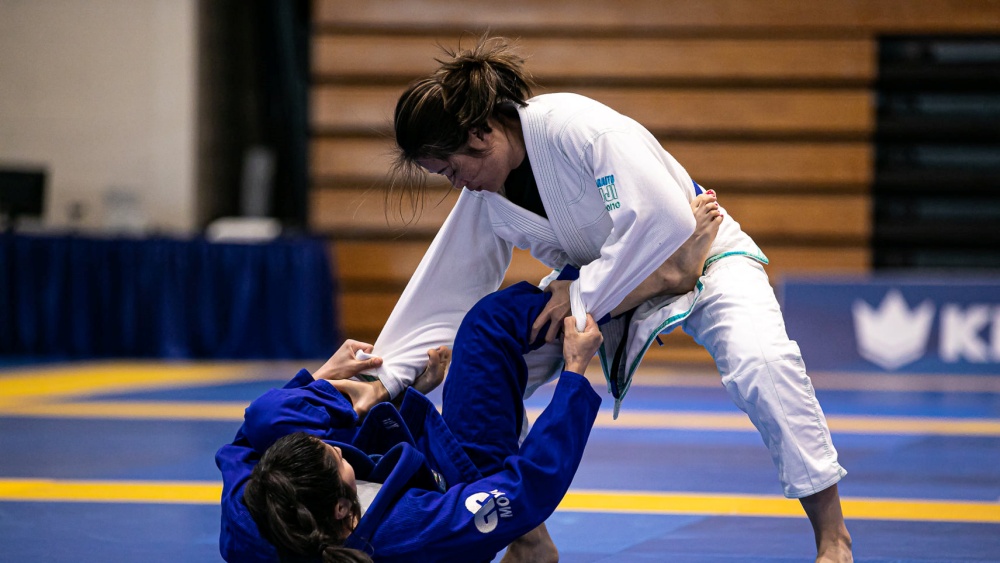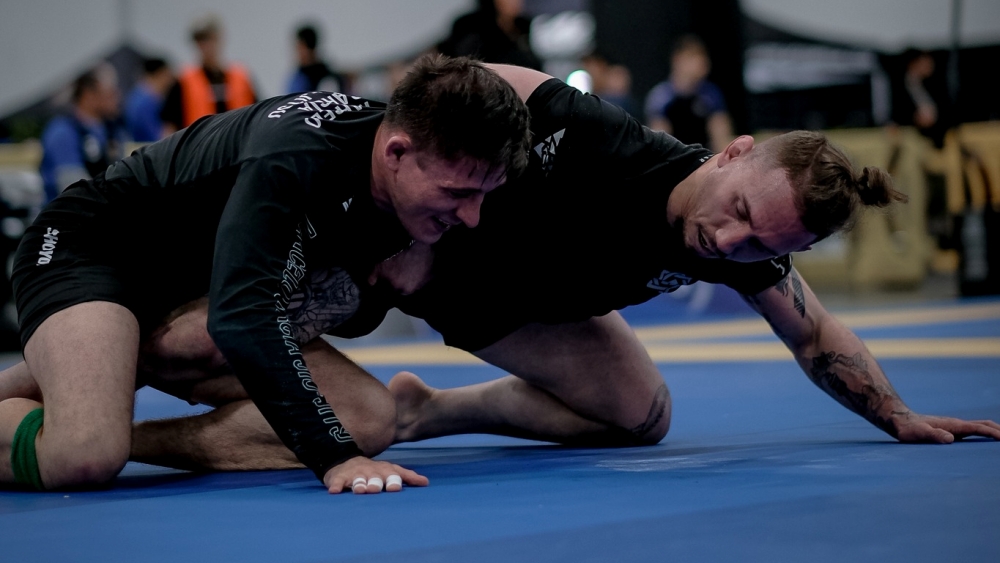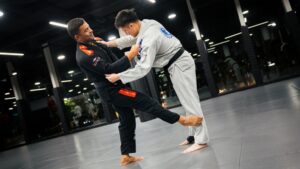The sport of Brazilian Jiu-Jitsu is an ever-evolving martial art that can be as diverse as the practitioners training it. One of the beautiful things about this art is the fact that you can develop a game that is uniquely yours, meaning that you can have a style that is very different from your training partners, gym mates, and even your instructors! This freedom is what makes learning BJJ a fun and engaging activity for all.
When it comes to bypassing your opponent’s guard in combat sports, there’s a variety of techniques, strategies, and approaches to pick from. As previously mentioned, you have the freedom to choose moves that align with your own unique fighting style and preferences. In this discussion, we’ll focus on various standing techniques for effectively passing your opponent’s guard.
Benefits Of Standing Passes
While there are many ways to pass the opponent’s guard, standing passes are typically the most preferred approach among almost all high-level competitors. The reason for this is the fact that passing the guard while standing up gives you a lot of mobility, which greatly helps in forcing the pass. Note that the more upright you are, the more you are prone to sweeps from your opponent. But for as long as you tread the guard carefully, you should be able to stay relatively safe from attacks.
Let’s use the closed guard as an example. The closed guard is by far one of the toughest guards to crack in Jiu-Jitsu. Basically, you can pass the closed guard either by attacking on your knees or by standing up. A low-passing approach is acceptable by all means, but you typically have limited mobility if you want to move from side to side. You are also more vulnerable to submissions as your limbs and head are closer to your opponent’s body. With this, standing passes are more common in most cases as it is a safer option.
Now that we have gone over the benefits of using standing passes, let’s go over several options you can do.
Bullfighter Pass (Toreando Pass)
The bullfighter pass, also known as the matador or toreando pass, is a classic technique to pass the opponent’s guard in both Gi and No-Gi grappling. In this video, Stephan Kesting demonstrates 5 variations of the bullfighter pass, namely: the old school toreando, pin with shoulder, push-pull, steering wheel to north-south, and toreando with one hand on hip. The basic premise is pretty much the same; you need to control the opponent by their legs (usually near the knees or ankles) and redirect their legs so that you can pass towards a side.
How you land on top of the opponent may depend on the variation you use and the defense your opponent does. Nevertheless, these variations of the bullfighter pass are extremely useful in all forms of grappling. Remember that the power of the bullfighter pass multiplies if you do this in MMA, as strikes add another layer of threat to the move.
X Pass
The X pass is a great partner to the bullfighter pass as it starts from a similar position. Here, we see Aaron Benzrihem’s approach to the X pass, from the control mechanics to the actual execution of the technique. From a similar starting position as the bullfighter pass, ensure that you have one leg inside and one leg out. Get your grips near the opponent’s knee and lapel, quickly raise the leg that’s in between your opponent’s, and step to the side to pass the guard.
The key difference between the X pass and the bullfighter pass is that the X pass is typically done by moving your body (in this case, the legs) out of the way instead of manipulating the opponent’s body to compromising positions. These 2 techniques are very effective when applied as a 1-2 combination.
ADCC champion Giancarlo Bodoni demonstrates the essentials of the leg drag guard pass in this video. At its essence, the leg drag is a guard-passing technique that redirects one of the opponent’s legs across their center line, giving you access to either the guard pass or the back. The technique starts by gripping the ankle or shin, then dragging it to the side to limit the defender’s ability to shrimp out or recover position. This technique is great for beating annoying guard players who use the De La Riva guard and other open guard options.
One of the main benefits of the leg drag is its versatility. It can be used from various guard positions, including standing or even inside the opponent’s guard. The leg drag not only serves as a passing option but also opens up many submission opportunities, making it a super devastating technique.
High Step Pass
The high step guard pass is a common technique in today’s No-Gi scene and is a must-learn if you want to add new wrinkles to your game. Mike Perez is an active black belt competitor from ATOS Jiu-Jitsu known for his dynamic passing game. The premise of the high step pass is to prevent your opponent from controlling your legs by doing a high step to either reset or move to a new position.
This concept is so powerful that you can develop a strong passing game by simply high stepping out of the most common guards you encounter so that you can reset on your own terms and attack when the opportunity presents itself.
Chaining Your Guard Passes

Attacking in chains is a good idea, especially when passing the guard. You need more than just one technique when trying to pass, as you’ll become predictable in your movements. The techniques we highlighted in this article can serve as a basic framework if you are in the process of developing your own guard passing system.
Conclusion
Passing the guard is a game in and of itself if you think about it. We selected these techniques because they are reasonably easy to do and are known to work even in championship-level matches.
You may also like:
















